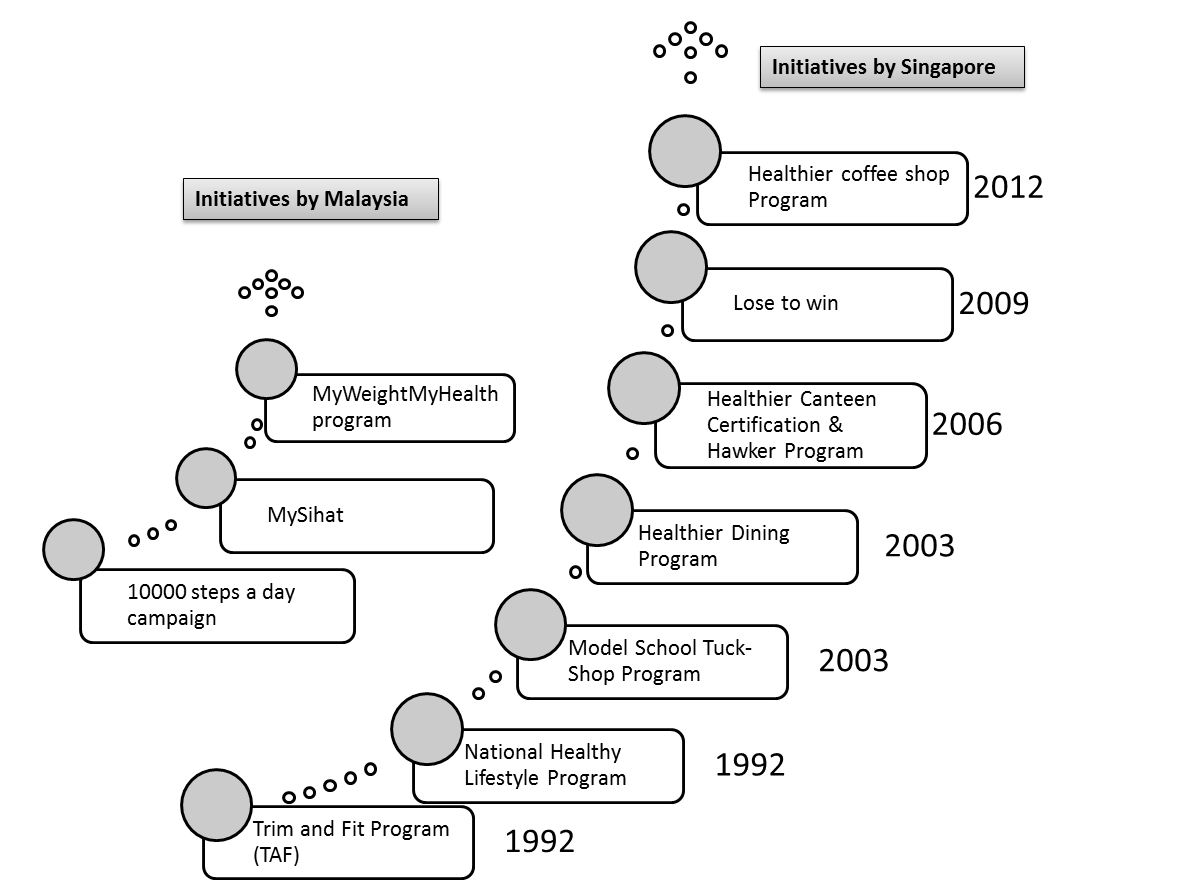Obesity and Overweight Management in Malaysia and Singapore: Progress on Right Track
Rohit Kumar Verma1, Grace Chua2, Sheba Rani David3
1 Lecturer, Department of Pharmacy Practice, School of Pharmacy, International Medical University, Kuala Lumpur-57000, Malaysia.
2 Research Scholar, School of Pharmacy, International Medical University, Kuala Lumpur-57000, Malaysia.
3 Lecturer, Department of Life Sciences, School of Pharmacy, International Medical University, Kuala Lumpur-57000, Malaysia.
NAME, ADDRESS, E-MAIL ID OF THE CORRESPONDING AUTHOR: Dr. Sheba Rani David, Lecturer, Department of Life Sciences, School of Pharmacy, International Medical University, Kuala Lumpur-57000, Malaysia.
Phone: 0060162771866,
E-mail: sdsheba@gmail.com
Obesity and overweight,Management,Malaysia,Singapore,Progress
Sir,
The ‘westernization’of eating habits has increased the number of fast-food outlets, both in Malaysia and Singapore. There is an increase in the prevalence of obesity in both these countries due to westernization, coupled with reduction of physical activity [1]. In 2010, the World Health Organization has ranked Malaysia as the sixth country that has the highest obesity rate in Asia. The Malaysian Ministry of Health reports that Malaysia has the highest statistics of obesity problem in South-East Asia. Meanwhile, in Singapore, 11% of the population is obese [1]. According to the World Health Organization (WHO), obesity is defined as an individual having BMI equal or more than 30 kg/m2 or individual that has waist-hip ratio (WHR) of more than 1:0 for male and more than 0:85 for female [2]. It is a multifactorial energy balance disorder due to excess calorie intake than energy output.
According to the Malaysian Clinical Practice Guideline (CPG), the initial approach to combat obesity would be lifestyle modification. Physical activity is the essential key in the management of obesity. It is advisable to include at least 45-60 minutes, of moderate intensity, of activity per day or less duration of vigorous activity. Apart from that, a reduction in calorie intake is prudent as well. The amount of calorie intake depends specifically, on the individual. For instance, a very low calorie diet will be indicated for a moderate to severe patient with BMI > 30 kg/m2. As for the pharmacotherapy, Orlistat or Sibutramine are the drugs of choice for obesity. However, it is only being indicated for patients who have BMI between 25 and 27.5kg/m2 and have other co-morbidities, such as type-2 diabetes mellitus, hypertension, hyperlipidaemia, coronary heart disease, cerebrovascular disease, along with a waist circumference >90cm for men and >80cm for women [3].
The algorithm for obesity management in Singapore is similar to Malaysia [Table/Fig-1]. Despite that, the most obvious difference would be the active involvement of the Singapore Health Promotion Board (HPB) against obesity in Singapore as compared to Malaysia. The trim and fit program was launched in 1992 to mitigate obesity in schools and was a successful programme. An overall 2.2% decrease in the overweight students was observed. Additionally, to fight against adolescent obesity, the Singapore government has created a school-based intervention program where the membership was compulsory for overweight students. Rigorous exercise routines were taught to the members. Moreover, recommended healthy food was sold in canteens to help them overcome obesity [4].
Initiatives for obesity management by Malaysia and Singapore

‘My Weight My Health’ program, was initiated by the Malaysian Pharmaceutical Society, to tackle weight issues experienced by Malaysians. It has a call center which consists of pharmacists, nutritionists and dieticians, to provide counselling and education for obese Malaysians [5]. In July 2009, the Malaysian government commenced ‘10,000 steps a day’ campaign, to reduce the sedentary lifestyle. Moreover, recently, Malaysian Health Promotion Board has proposed a new program, MySihat, where one of the objectives of the program is to increase optimal nutrition via promoting healthy food choices and weight reduction.
To conclude, as the prevalence of obesity is seriously on the rise these days, it is important for both, the private and government sectors, to collaborate to tackle this problem. This warrants for a comprehensive national strategy for the obese population to be implemented, which would address both dietetic and activity contributors to the unwanted weight-gain. The Malaysian government has taken strong initiatives to reduce obesity percentage. However, these efforts need to be persistent and focused in order to bring down the high percentage.
[1]. Jeremy Grant ‘Singapore cracks down on obesity’, The Financial Times Ltd., 29 October, 2012 [cited on 20th May, 2013] Available at: http://www.ft.com/cms/s/0/64391ed6-20d2-11e2-9720-00144feabdc0.html#axzz2Toh1GYBr [Google Scholar]
[2]. Obesity and overweight(March 2013), (Accessed: 20th May, 2013).Available at: http://www.who.int/mediacentre/factsheets/fs311/en/ [Google Scholar]
[3]. ‘Management of Obesity’, Clinical Practice Guideline, (2004)[Online]. (Accessed: 20th May 2013).Available at: www.moh.gov.my/attachments/3932 [Google Scholar]
[4]. Professor JS Cheah, (2001) ‘Obesity in Singapore 30(6). [Online]. (Accessed: 20th May 2013).Available at: http://annals.edu.sg/pdfNov01/edit306.pdf [Google Scholar]
[5]. Myweight Myhealth, (2012) (Accessed: 20th May, 2013). Available at: http://www.myweightmyhealth.org.my/ [Google Scholar]